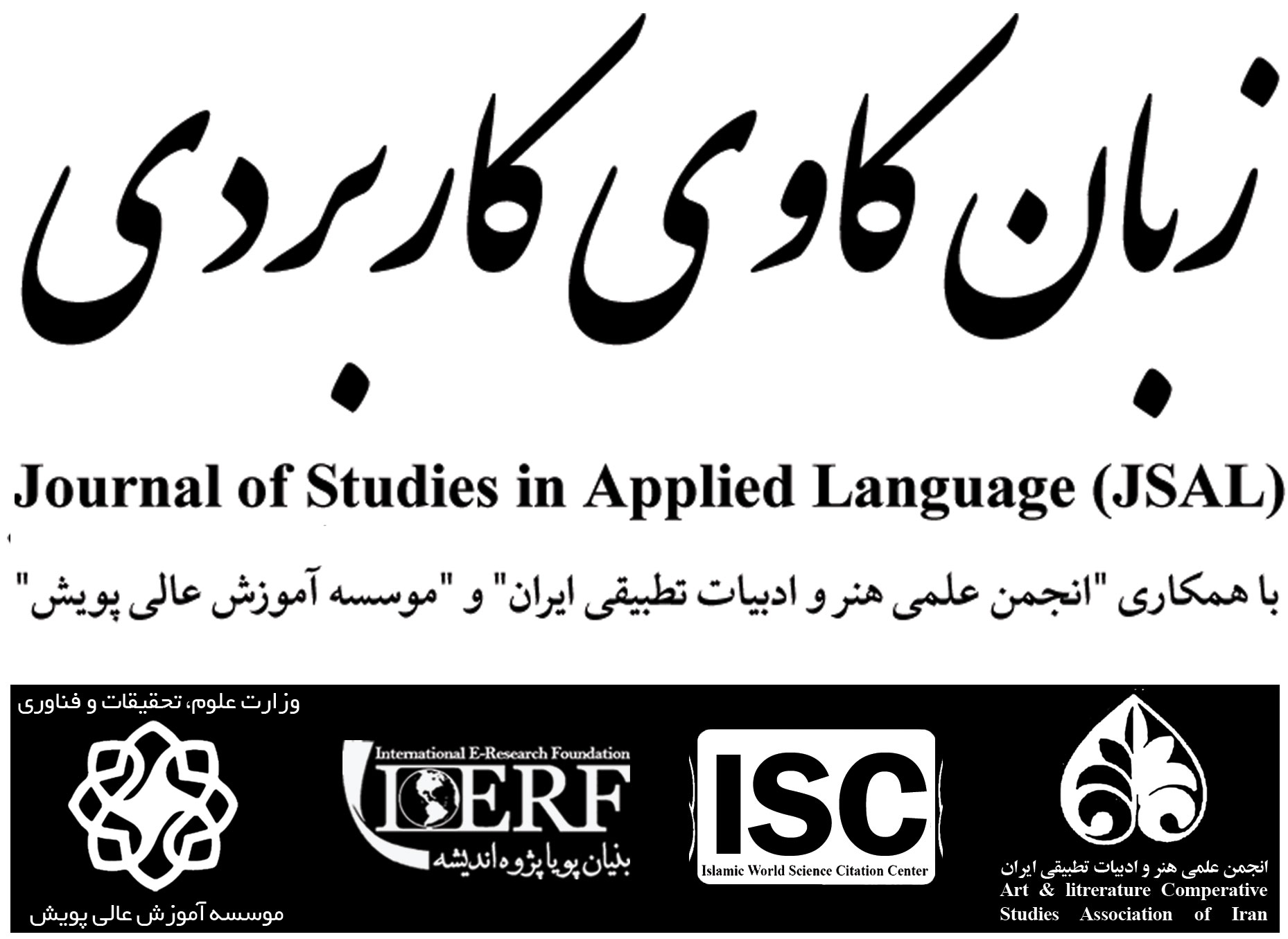Volume 6, Issue 1 (Journal of Studies in Applied Language (JSAL) 2023)
JSAL 2023, 6(1): 61-78 |
Back to browse issues page
Download citation:
BibTeX | RIS | EndNote | Medlars | ProCite | Reference Manager | RefWorks
Send citation to:



BibTeX | RIS | EndNote | Medlars | ProCite | Reference Manager | RefWorks
Send citation to:
Hajizadeh M, Farhadi R. (2023). Effectiveness of the Garces Model in Evaluating Grammatical Efficiency; Case Study: Ali Shirvani's Translation of Nahj al-Balagheh [In Persian]. JSAL. 6(1), 61-78. doi:10.52547/jsal.6.1.61
URL: http://jsal.ierf.ir/article-1-23-en.html
URL: http://jsal.ierf.ir/article-1-23-en.html
1- Associate Professor, Department of Arabic Language and Literature, Faculty of Literature and Humanities, Shahid Madani University of Azerbaijan, Iran
2- MA of Arabic Language and Literature, Faculty of Literature and Humanities, Shahid Madani University of Azerbaijan, Iran , farhadirana95@gmail.com
2- MA of Arabic Language and Literature, Faculty of Literature and Humanities, Shahid Madani University of Azerbaijan, Iran , farhadirana95@gmail.com
Abstract: (3147 Views)
The translation of religious writings is one of the most challenging and exact forms of translation, requiring the translator to be more accurate and skilled to express the literary nuances of the subject text. However, to assess the accuracy and quality of these translations, fidelity or lack thereof to the original text, level of quality and acceptability, etc., one must inevitably refer to the theories proposed in the field of translation criticism and evaluation. Only then can these translations be properly assessed. The Garces model, one of these models, is employed to assess how well literary materials have been translated. The four levels of semantic-lexical, syntactic-word construction, discourse-functional, and stylistic-practical level are proposed in this model to compare the similarity between the source text and the target text. Based on these four levels, it evaluates the quality and acceptability of the translated texts. As a result, the current study uses a descriptive-analytical approach to assess the accuracy and acceptability of Ali Shirvani's translation of Nahj al-Balagheh based on Garces's theory. The findings demonstrate that Shirvani is content-oriented in her translation and frequently clarifies and broadens the meaning of Imam Ali's statements based on the positive, negative, and neutral strategies that are suggested in the Garces model. The second and fourth layers of the Garces pattern, out of its four levels, are most frequently translated by Shirvani. He occasionally employs constructive strategies like syntactic expansion, grammatical or syntax changes, viewpoint shifts, etc. On the other side, there are also issues with his translation that detract from its quality, such as omissions, translation errors, verbosity, etc.
Keywords: Grammatical evaluation of translation, Nahj al-Balagheh, Ali Shirvani, Garces model, Discourse Analysis
Type of Study: Research |
Subject:
Discourse Analysis
Received: 2022/01/10 | Accepted: 2022/05/5 | Published: 2023/03/1
Received: 2022/01/10 | Accepted: 2022/05/5 | Published: 2023/03/1
References
1. Nahj al-Balagheh.
2. Khazaeifar, A., (2008), Translation of literary texts, 7th Edition, Tehran: Samt.
3. Aghili Ashtiyani, A., (1382), Translation of literary texts, edited by Ali Bahrami, Tehran: Rahnema.
4. Mandi, J., (1384), Introduction to translation studies (theories and applications), translated by Hamid Kashanian, 1th Edition. Tehran: Rukh Publications.
5. Mokhtari Ardakani, M., (2006), Metaphor of translation (Collection of articles on translation), Kerman: Shahid Bahonar University, Kerman.
6. Bassnett McGuire, S., (1991). Translation Atudies London: routledge.
7. Garces, C. V., (1994). "A methodological proposal for the assessment of ranslated literary works: A case study The Scarlet Letter by N.Hawthorne into Spanish", Babel. Vol. 40, No. 2, pp. 77- 102. Doi: 10.1075/babel.40.2.03val [DOI:10.1075/babel.40.2.03val]
8. Newmark, P., (1981). Approaches of Tranalation. England: Prentice Hall International (UK).
9. Newmark, P., (1988). A textbook of Translation. New York: Prentice- Hall.
10. http://www.uah.es/es/estudios/profesor/M.-Carmen-Valero-Garcea.
Send email to the article author
| Rights and permissions | |
 |
This work is licensed under a Creative Commons Attribution-NonCommercial 4.0 International License. |









